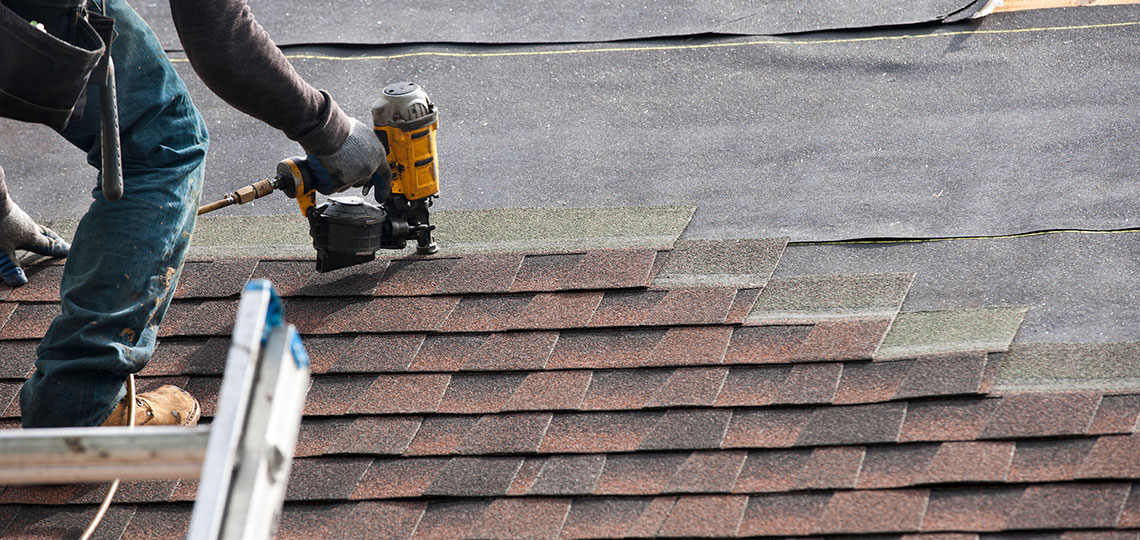Individual Reviews on the Best Gainesville FL Roofing Companies Offered
Ideal Practices for Ensuring Appropriate Roof Air Flow
Ensuring appropriate roof air flow is important for the long life and performance of a roof. A balanced consumption and exhaust vent ratio, typically 1:300, plays an essential duty, with intake vents preferably positioned at the reduced edge of the roofing system for amazing air entry and exhaust vents at the height for cozy air leave. Routine assessments to recognize obstructions and maintain clear air movement are extremely important. Keeping insulation away from vents is important to protect against airflow constraint. Recognizing these foundational elements establishes the phase for more detailed understandings into setup and maintenance methods that can considerably boost your roofing system's efficiency.
Understand Air Flow Basics
Correctly understanding air flow essentials is important for making sure the durability and efficiency of roof systems. Efficient air flow minimizes wetness buildup and temperature level extremes in the attic, both of which can cause substantial structural damages over time. A well-ventilated roof helps in protecting against usual issues such as mold growth, wood rot, and ice dams, which can compromise the stability of the roof covering products and the underlying structures.
The primary objective of ventilation is to assist in the motion of air, permitting a consistent exchange in between the outside and interior environments. This equilibrium is attained through a mix of intake and exhaust vents that interact to keep ideal air flow. Consumption vents, usually located along the eaves or soffits, allow fresh air to go into the attic room, while exhaust vents, usually positioned at or near the roofing ridge, allow warm, moist air to get away.
Secret variables affecting the efficiency of roofing air flow consist of appropriate placement, sufficient sizing, and guaranteeing that both intake and exhaust vents are unblocked. Regular inspection and maintenance are essential to identify possible blockages, damages, or ineffectiveness in the ventilation system, thus guarding the roofing's performance and resilience.
Sorts Of Roofing Vents
Roof vents play a crucial function in maintaining effective attic room ventilation and, by expansion, the general health of the roof. Different sorts of roof vents are offered, each with one-of-a-kind advantages tailored to certain roofing needs. Ridge vents, as an example, are mounted along the roofing system's height, allowing warm, damp air to get away from the attic room. They provide continual ventilation and blend seamlessly with the roofline, making them both reliable and visually pleasing.

Soffit vents are installed under the eaves and work in tandem with roofing system vents to guarantee a well balanced intake and exhaust system. By enabling cooler air to go into from below, soffit vents promote the expulsion of hot air through upper vents. Gable vents, located on the outside wall surfaces of the attic room, offer one more reliable solution, especially in homes with gable roofs.
Evaluate Your Existing Air Flow

Following, take into consideration the age and problem of your roofing materials and ventilation components. Older systems might not adhere to current building ordinance or may have deteriorated with time, minimizing their efficiency. Conduct a comprehensive examination to determine any indicators of deterioration, such as corrosion, damages, or spaces that might endanger the system's efficiency.
Furthermore, gauge the attic temperature level and humidity degrees. High temperature levels and moisture can show insufficient air flow.
Installment Best Practices
Effective installment of roofing ventilation systems is extremely important for making certain optimal performance and durability. Appropriate installation begins with comprehending the specific air flow demands of the roof and the building it covers. This their website entails calculating the correct proportion of consumption to exhaust vents, usually adhering to the 1:300 regulation, which stipulates one square foot of air flow for each 300 square feet of attic room flooring room.

The positioning of vents is just as vital. Consumption vents need to be mounted at the roofing system's reduced edge, usually in the soffits, to permit trendy air to enter. Exhaust vents, on the various other hand, need to be mounted near or at the roof's height to promote the leave of warm, damp air. This creates an all-natural air flow that aids maintain temperature and dampness balance within the attic area.
Seal all vent links diligently to avoid air leakages and possible water seepage. Usage high-quality materials and comply with maker standards to ensure toughness and performance. Additionally, incorporating ridge vents with baffles can considerably improve air movement effectiveness by protecting against wind-driven rainfall and snow from getting in the attic.
Eventually, exact installment of roof covering air flow systems alleviates prospective concerns such as mold and mildew growth, ice dams, and structural damage, ensuring the roof covering's honesty and the structure's total health.
Routine Maintenance Tips
Consistency in maintenance practices is fundamental to guaranteeing the long-term efficiency of roof covering ventilation systems. Throughout these examinations, make sure that vents are totally free of particles, nests, and various other blockages that can hamper airflow.
Cleaning the vents is an additional necessary task. Utilize a soft brush or a vacuum to eliminate dust and debris from consumption and exhaust vents. Be careful not to damage the air vent screens or louvers throughout the process. Furthermore, examine the attic space for any type of indicators of water damage, which can jeopardize the honesty of the roof.
Correct insulation is equally essential. Guarantee that attic room insulation does not obstruct the vents, as this can seriously restrict air flow. If any kind of insulation has actually shifted or settled, reposition or replace it to maintain a reliable obstacle.
Lastly, replace any type of harmed or missing components quickly. Broken vents, cracked shingles, or shabby flashing can all add to poor air flow and ought to be dealt with right away. Routine maintenance makes sure that the roofing ventilation system functions optimally, thus prolonging the life expectancy of the roofing itself.
Verdict
Making certain proper roof covering air flow is vital for preserving the performance and durability of a roof covering system. Adherence to the click this site 1:300 intake and exhaust air vent ratio, paired with the calculated positioning of vents, is important. Regular semiannual evaluations, debris cleaning, and ensuring insulation does not block airflow are critical practices. Applying these finest practices will foster a well-ventilated roof, consequently reducing possible problems connected to moisture accumulation and excessive warmth, eventually lengthening the roofing's lifespan.
A balanced intake and exhaust vent proportion, typically 1:300, plays a pivotal duty, with intake vents ideally positioned at the reduced edge of the roof covering for trendy air entry and exhaust vents at the height for warm air leave. Consumption vents, generally situated along the soffits or eaves, permit fresh air to enter the attic area, while exhaust vents, frequently located at or near the roof covering ridge, enable hot, humid air to leave.
Soffit vents are mounted under the eaves and job in tandem with roofing vents to ensure a balanced intake and exhaust system. By enabling cooler air Clicking Here to go into from below, soffit vents promote the expulsion of hot air through upper vents. Adherence to the 1:300 consumption and exhaust vent ratio, coupled with the tactical positioning of vents, is vital.